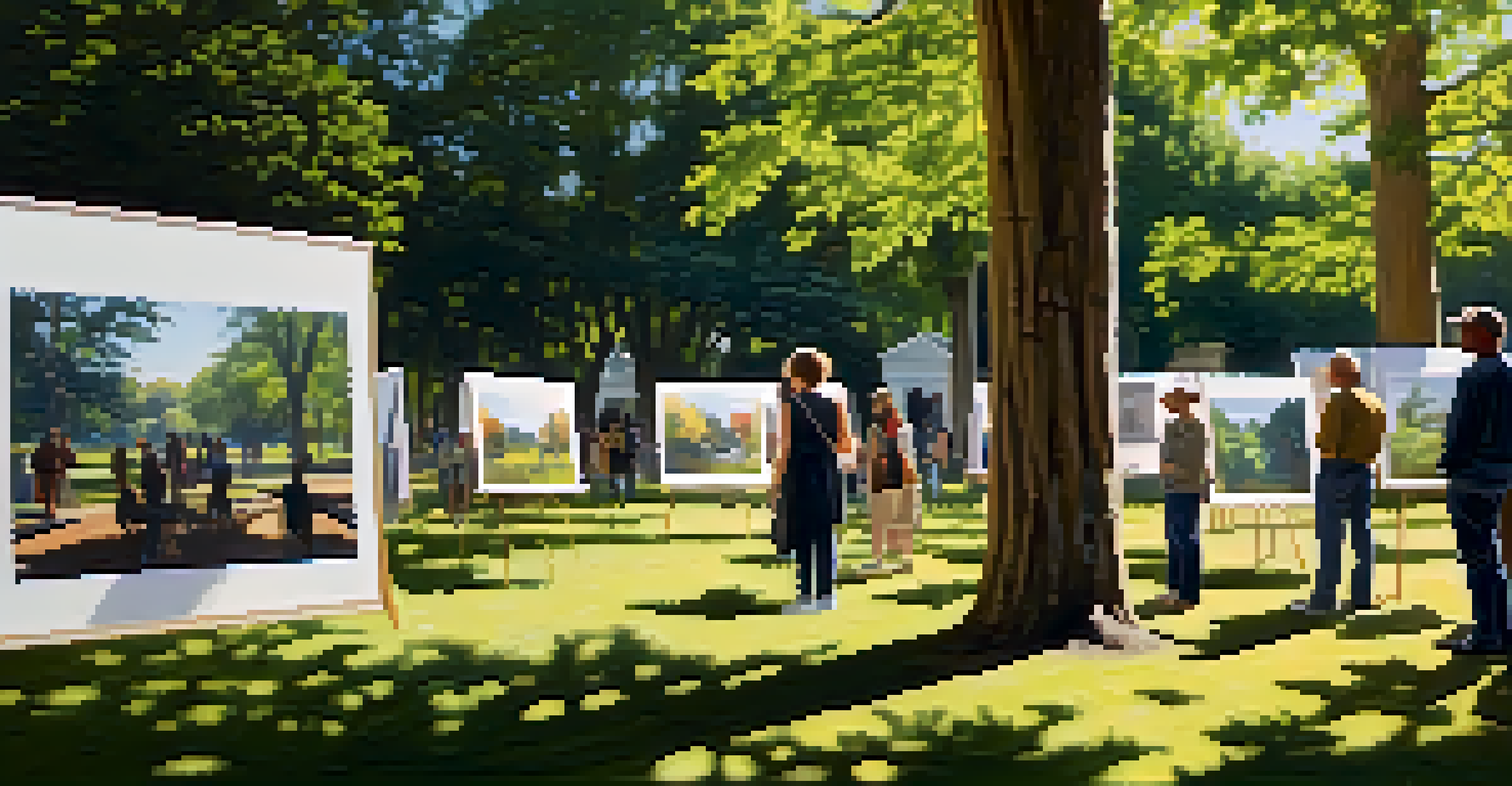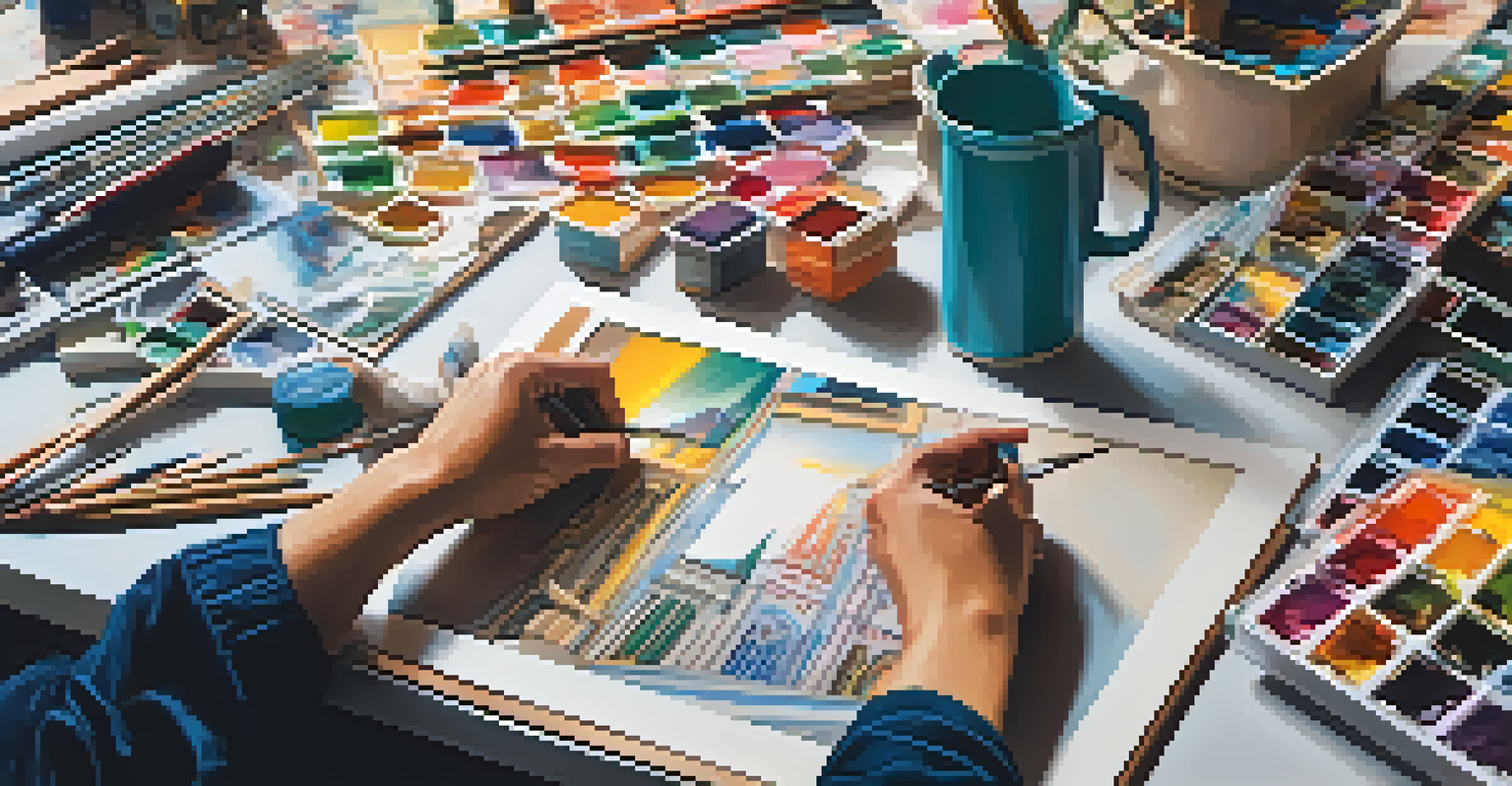How to Organize a Photography Exhibition Successfully

Define Your Vision and Goals for the Exhibition
Before diving into logistics, it's crucial to define your vision. What message do you want to convey through the photographs? This clarity will guide every decision, from the theme to the venue.
Art is not what you see, but what you make others see.
Setting specific goals can also help you measure success. Are you looking to sell prints, gain exposure, or foster a community around photography? Knowing the 'why' behind your exhibition will motivate you and your team.
For example, if your goal is to highlight local landscapes, your selection of photos and promotional materials should reflect that theme, creating a cohesive experience for your audience.
Choose the Right Venue for Your Exhibition
Selecting the perfect venue can make or break your exhibition. Consider factors like location, accessibility, and the atmosphere that aligns with your vision. A cozy gallery might be ideal for intimate works, while a larger space could accommodate more pieces.

Additionally, think about the logistics—how many visitors can the space handle? A busy street corner might attract foot traffic, but a hidden gem could offer a more personal viewing experience.
Define Your Vision and Goals
Establishing a clear vision and specific goals will guide your exhibition decisions and motivate your team.
For instance, if your exhibition is themed around urban nightlife, a small, trendy bar with an artsy vibe could enhance the overall experience, allowing your audience to immerse themselves fully in the artwork.
Curate Your Collection Thoughtfully
Curating is like telling a story through your photographs. Choose images that not only showcase your talent but also fit the theme you've established. Aim for a mix of styles and subjects to keep the audience engaged.
The best way to predict the future is to create it.
Consider the flow of the exhibition; how one piece transitions into the next can significantly impact visitor experience. Arrange the photographs in a way that guides viewers through your narrative.
For example, if showcasing a series of portraits, you might start with candid shots that evoke emotion, then transition to more posed images that highlight different aspects of your subjects' personalities.
Promote Your Exhibition Effectively
Once your exhibition is planned, it's time to spread the word! Utilize social media platforms to create buzz. Share sneak peeks of the photographs, behind-the-scenes preparations, and personal stories related to the pieces.
Don’t underestimate the power of local media and community boards. Reach out to bloggers and journalists who focus on art and culture; their coverage can significantly boost your visibility.
Engage Your Audience Effectively
Creating interactive elements and hosting discussions will keep your audience involved and increase their interest.
Consider creating an event page on platforms like Facebook or Eventbrite, where potential attendees can RSVP and share the event with their networks, widening your reach even further.
Prepare for the Opening Night Logistics
Opening night can be both exciting and nerve-wracking, so preparation is key. Make a checklist of everything you need, from hanging the photographs to arranging refreshments. Don't forget about lighting; it can dramatically affect how your images are perceived.
Assign roles to trusted friends or team members to help with setup and guest management. Having a few extra hands can alleviate stress and ensure everything runs smoothly.
On the night itself, greet your guests warmly and provide them with information about the exhibition, including the inspiration behind the photos. Engaging with your audience can leave a lasting impression.
Engage Your Audience During the Exhibition
Keeping your audience engaged is essential for a successful exhibition. Consider hosting guided tours or Q&A sessions where you can discuss your work and the stories behind the photographs.
Interactive elements can also enhance the experience. For instance, you might set up a station where guests can leave feedback or share their favorite pieces, allowing for a deeper connection with your audience.
Gather Feedback for Future Growth
Collecting feedback after the exhibition will help you understand audience preferences and improve future events.
By fostering dialogue and interaction, you create an environment where attendees feel involved, which can lead to increased interest in your work and future projects.
Gather Feedback and Reflect on the Experience
After the exhibition wraps up, take time to gather feedback from attendees. You could use surveys or informal chats to understand what resonated with your audience and what could be improved for next time.
Reflecting on the experience is also vital. Consider what aspects of the planning and execution worked well and what challenges you faced. This reflection will be invaluable for future exhibitions.

For instance, if you received positive comments about the venue's ambiance, you might choose a similar space next time. Learning from both successes and setbacks will help you grow as an organizer and artist.